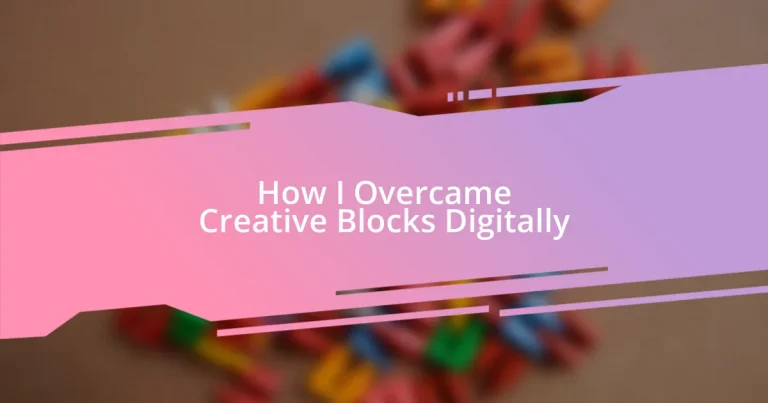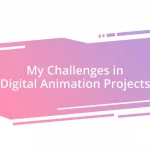Key takeaways:
- Creative blocks are normal and can be viewed as signals to recharge or change approach, often influenced by pressure and self-doubt.
- Identifying triggers, such as external stressors, personal habits, and environmental changes, can help manage creativity more effectively.
- Establishing a routine, incorporating rituals, and reflecting on progress fosters creativity and helps overcome blocks.
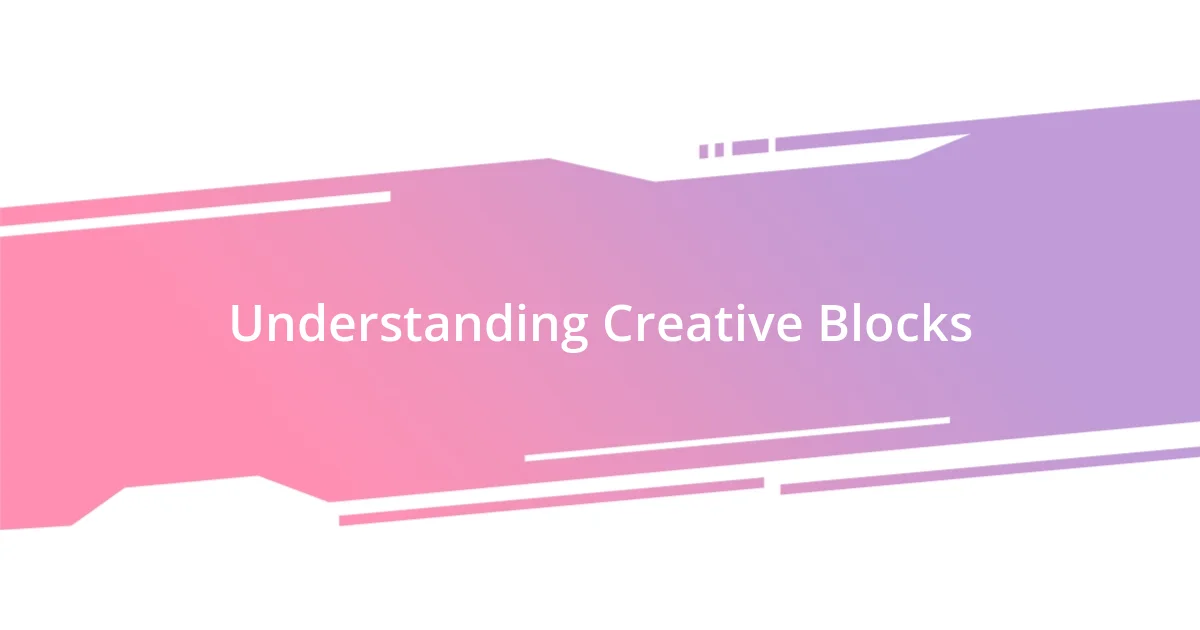
Understanding Creative Blocks
Creative blocks can feel like a wall between you and your next great idea. I remember a time when I sat in front of my screen for hours, staring blankly, hoping inspiration would magically strike. It was frustrating—like being trapped in a fog where nothing seemed to resonate.
What’s interesting is that these blocks often stem from a mix of pressure and self-doubt. Have you ever felt the weight of expectations crushing your creativity? In my experience, those moments of intense self-criticism stifled my ability to express myself freely. It was as if I were my own worst enemy, creating an internal battle instead of allowing ideas to flow naturally.
Understanding that creative blocks are a normal part of the process changed my perspective. I learned to view them not as failures, but as signals from my mind that I needed to recharge or change my approach. Sometimes, just stepping away and engaging in something entirely different—like going for a walk or doodling—released that pent-up creativity waiting to be unleashed.
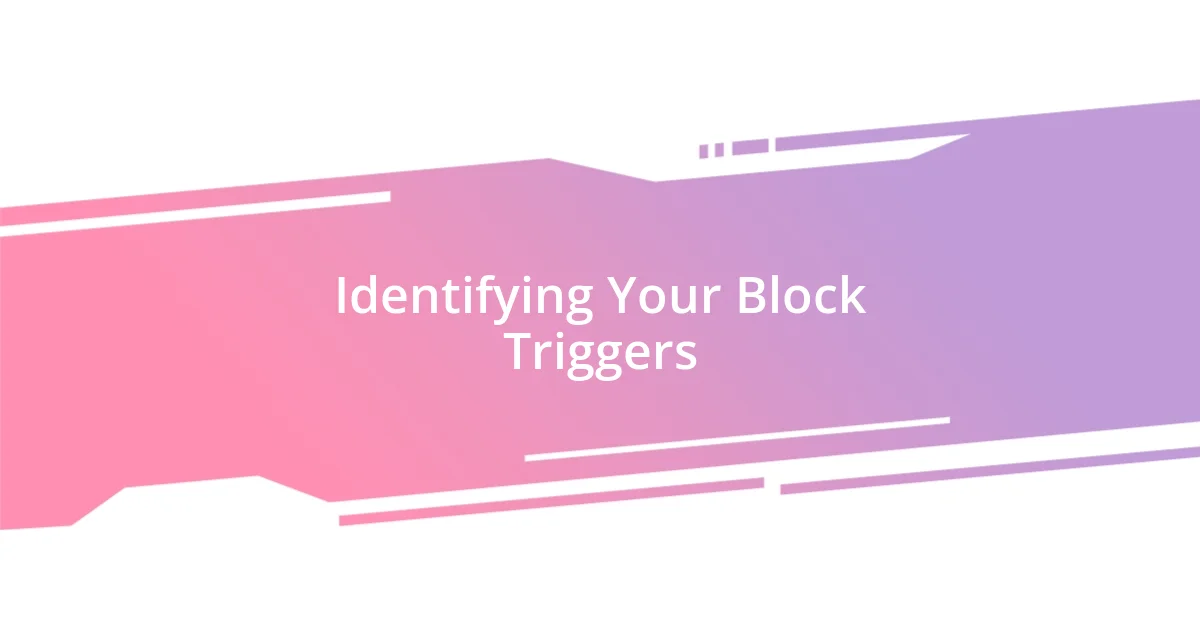
Identifying Your Block Triggers
Identifying the triggers that lead to creative blocks is crucial for overcoming them. I often find that specific situations or feelings can push me into that frustrating creative standstill. For instance, a looming deadline can create anxiety, which makes it (almost) impossible to focus. Recognizing these patterns has allowed me to better manage my creative environment.
Sometimes, it’s not just external stressors that cause issues; my personal habits play a significant role too. I notice that when I scroll through social media for too long, I start comparing my work to others, which leads to self-doubt. This realization pushed me to set clear boundaries on my screen time. By actively noticing what drains my energy versus what fuels it, I’ve developed a clearer roadmap to navigate through my blocks.
What’s fascinating is how variations in my daily routine can either enhance or stifle my creativity. Just the other day, I switched up my workspace. Instead of my usual desk, I set up in a cozy café, and the change energized me. Identifying these environmental triggers has been a game changer. It allows me to harness different settings that ignite my creativity rather than quash it.
| Trigger Type | Description |
|---|---|
| External Stressors | Deadlines or pressures that create anxiety and fear of failure. |
| Personal Habits | Actions like excessive social media use that lead to comparison and self-doubt. |
| Environmental Changes | Shifting workspaces to stimulate creativity and freshness. |
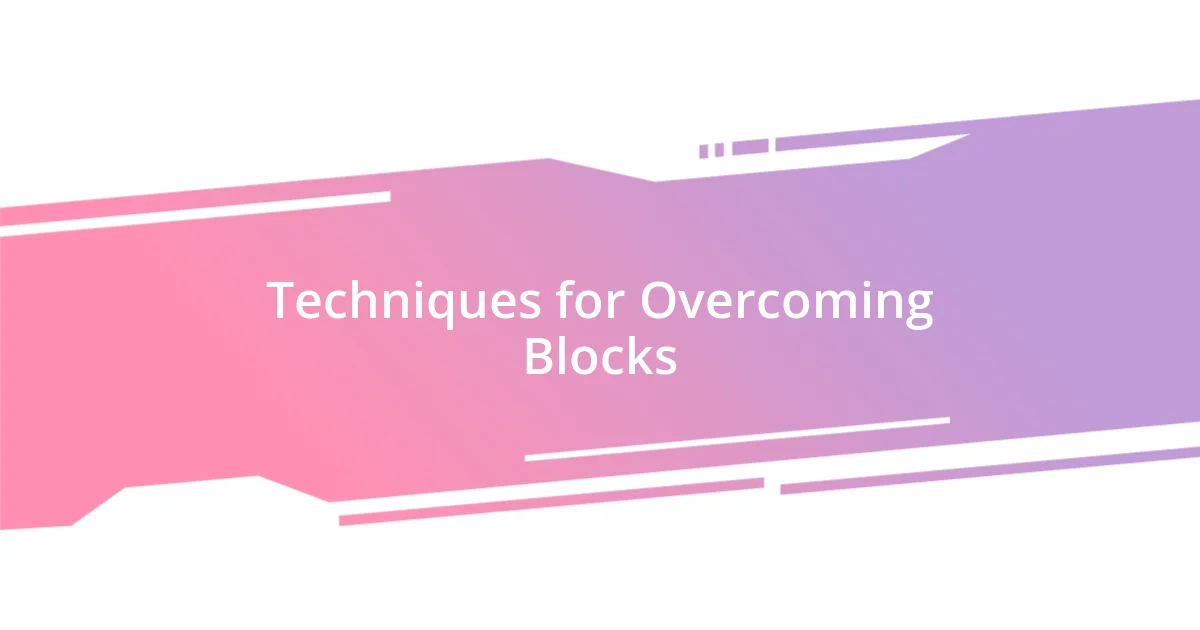
Techniques for Overcoming Blocks
Finding effective techniques for overcoming creative blocks can feel like discovering hidden treasures along a creative journey. One technique that has really transformed my approach is using prompts. When I’m stuck, I love choosing a random word and letting it guide my thoughts. Just the other day, “river” popped up. I jotted down everything that came to mind – from imagery to emotions – and surprisingly, it sparked an entire story idea! This method breaks the cycle of self-doubt and gets the creative juices flowing in unexpected ways.
Another helpful technique is to set time limits for brainstorming sessions. I’ve found that the pressure of a ticking clock can actually ignite my creativity rather than stifle it. Here’s a quick list of techniques that have worked for me:
- Creative Prompts: Use random words or phrases to spark new ideas.
- Time-Boxing: Set a timer (like 15 minutes) to focus intensely on generating ideas without overthinking.
- Mind Mapping: Visualize your thoughts on paper to explore connections.
- Physical Movement: Engage in activities like biking or stretching to get blood flowing, which can lead to breakthroughs.
- Collaborative Brainstorming: Gather with friends or colleagues for group ideation sessions to inspire fresh perspectives.
These techniques not only help me break through mental barriers but also add a sense of playfulness to my creative process, making it feel less like a chore and more like an adventure.
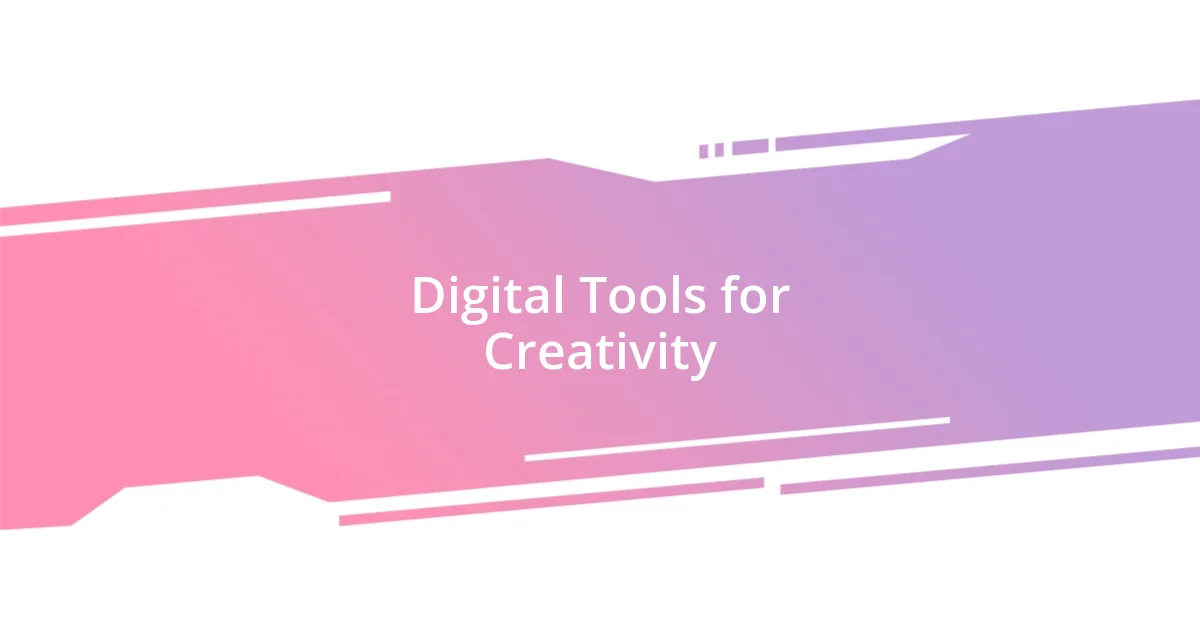
Digital Tools for Creativity
Digital tools have revolutionized how I tap into my creativity. For example, I often use apps like Evernote to jot down ideas whenever inspiration strikes. There was a time when I would forget those fleeting thoughts, which was incredibly frustrating! Now, I’m able to maintain a steady stream of inspiration right at my fingertips.
When it comes to visualizing ideas, I swear by MindMeister. This mind mapping tool helps me lay out my thoughts in a way that’s both structured and free-flowing. Just the other day, I mapped out a new project, and it felt like I was painting a picture with words. The connections I made surprised me and sparked ideas I hadn’t considered. Have you ever experienced that rush when everything clicks into place? It’s exhilarating!
Another digital tool that I can’t live without is Adobe Spark. It allows me to create stunning graphics effortlessly. I remember a morning when I needed to create a quick social media post. Rather than getting bogged down in design details, I simply chose a template, played with the colors, and voila—within minutes, I had something I was genuinely excited to share. The ease of these tools can turn what often feels like a daunting task into a joyous experience. Isn’t that the ultimate goal? Finding joy in creativity, even when the blocks feel insurmountable?
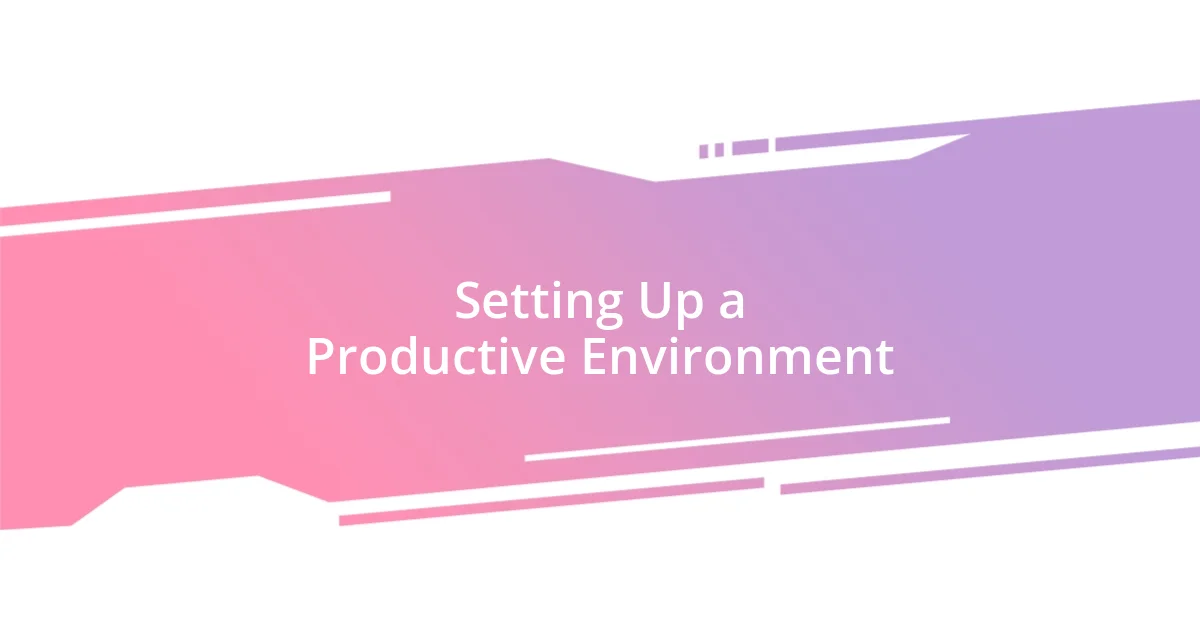
Setting Up a Productive Environment
Creating a productive environment has been a game-changer for me. I learned early on that a cluttered workspace can reflect a cluttered mind. When I revamped my desk, adding some plants and simplifying my tools, I felt an immediate shift in my focus. Have you ever noticed how a clean space makes you feel lighter? It’s incredible how much our surroundings can influence our creativity.
I also believe that lighting plays a significant role in setting the mood for creativity. Bright, natural light invigorates me, while softer lighting in the evenings encourages relaxation and idea exploration. There were times when I’d stare at a blank screen, feeling uninspired, simply because the lighting felt too harsh or dull. Nowadays, I play around with my desk lamp’s brightness—a small change that has made a huge difference in my overall productivity.
Sound is another crucial factor in my creative space. I’ve discovered that playing background music or ambient sounds can either amplify my focus or distract me completely. Experimenting with different playlists has been a fun journey! Sometimes, I opt for soft instrumental music, while other times, I need the energy of upbeat tracks. Have you found what works best for you? Finding that perfect sound can be like crafting the ideal backdrop for your creative process, and I encourage you to explore until you strike a harmonious chord.
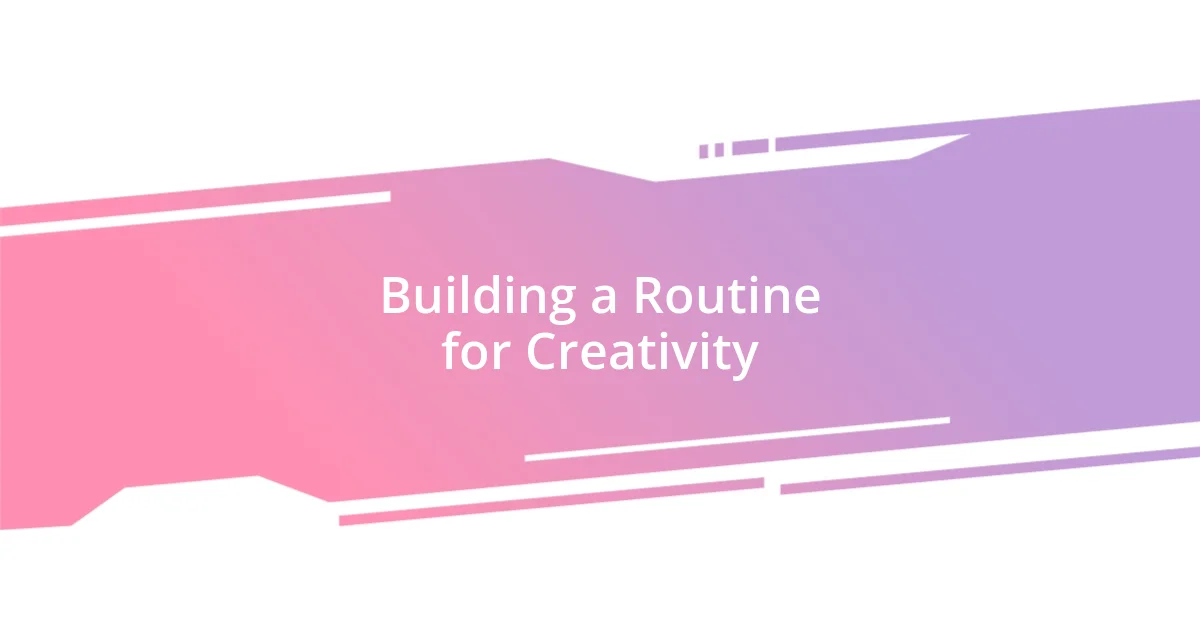
Building a Routine for Creativity
Building a routine for creativity is vital, and I’ve found that consistency truly helps unlock my potential. I designate specific hours for creative work, treating them like important appointments. There’s something refreshing about knowing that during these times, it’s just me and my ideas. Have you ever committed to a schedule and felt that creative flow wash over you? It’s quite the experience!
Incorporating rituals into my routine has also been a game-changer. Before diving into a creative task, I brew a cup of my favorite tea, allowing that calming moment to signal it’s time to create. This simple act not only grounds me but also signals to my brain that it’s time to shift gears. I can’t tell you how many times that comforting routine has pulled me out of a creative funk!
I’ve also realized the importance of embracing flexibility within my routine. While I strive to maintain structure, I allow myself the freedom to explore new ideas or adjust my creative sessions as inspired. Recently, I started attending online workshops whenever I feel stuck, and the fresh perspectives often reignite my creativity. Have you explored varying your approach? Sometimes, stepping outside our usual patterns can reveal paths we never anticipated!
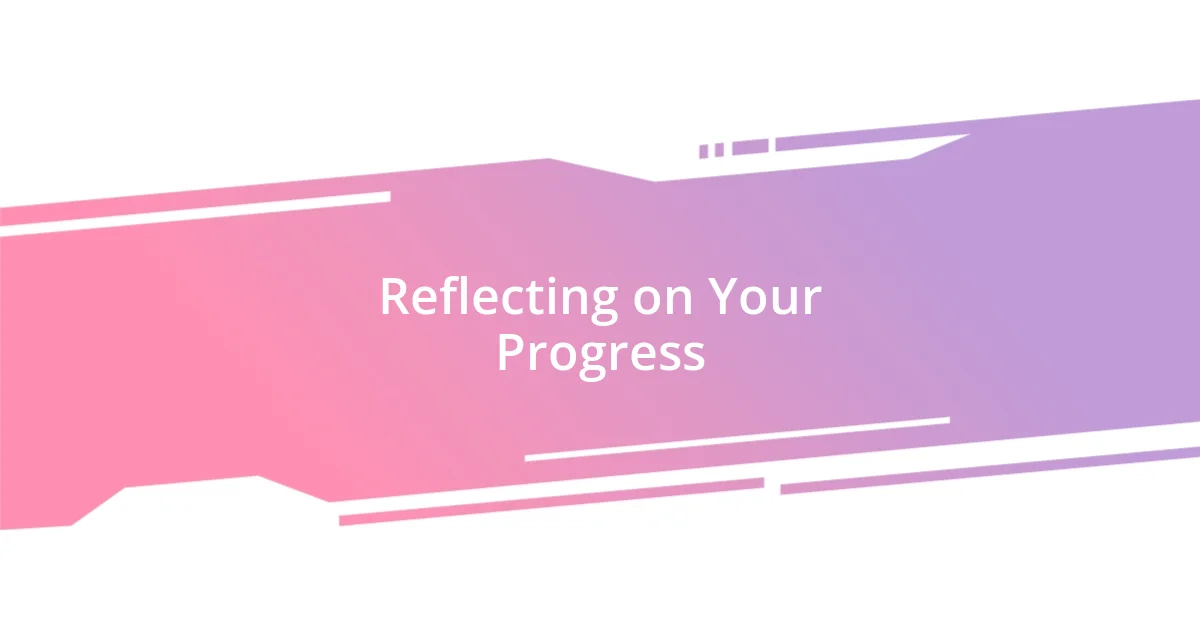
Reflecting on Your Progress
Reflecting on my progress has become an essential part of my creative journey. I remember the early days when I felt overwhelmed by my own expectations, constantly chasing an elusive sense of achievement. Taking time to pause and evaluate what I’d accomplished allowed me to see how far I had truly come. Have you ever had that moment of realization where you look back and feel proud of little victories? It’s a powerful feeling that can reignite your passion.
One technique that has proven invaluable is journaling my creative experiences. Each week, I jot down my thoughts on what worked, what didn’t, and how I felt throughout the process. This practice not only highlights my progress but also reveals patterns that guide my future endeavors. I vividly recall one entry where I noted down a particularly fruitful brainstorming session. Reflecting on it helped me understand the conditions that sparked my creativity that day, leading me to recreate that magic in subsequent sessions.
I’ve also learned to celebrate the small wins that may seem insignificant at first glance. One day, I finished a piece I had put off for weeks, and instead of just moving on, I took a moment to appreciate the effort it took to complete it. Recognizing these moments builds my confidence. Have you ever taken the time to truly celebrate your growth? Each milestone, no matter how small, fuels my motivation and fosters a sense of continuity in my creative evolution.












